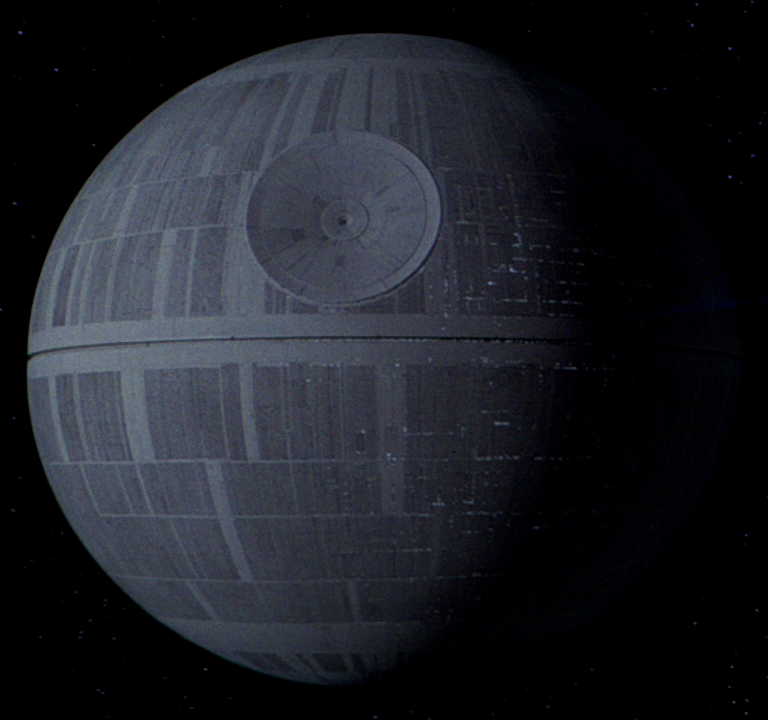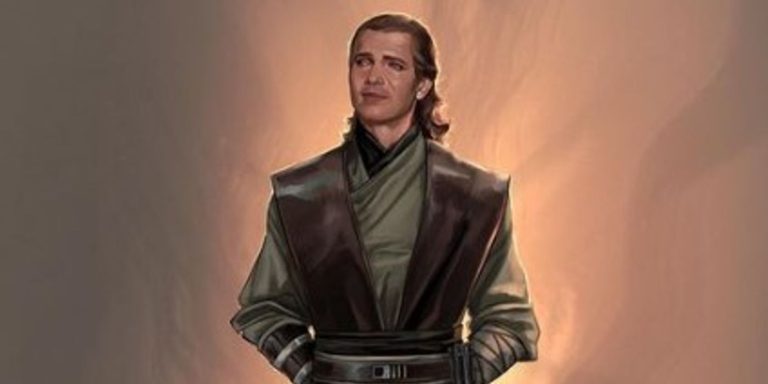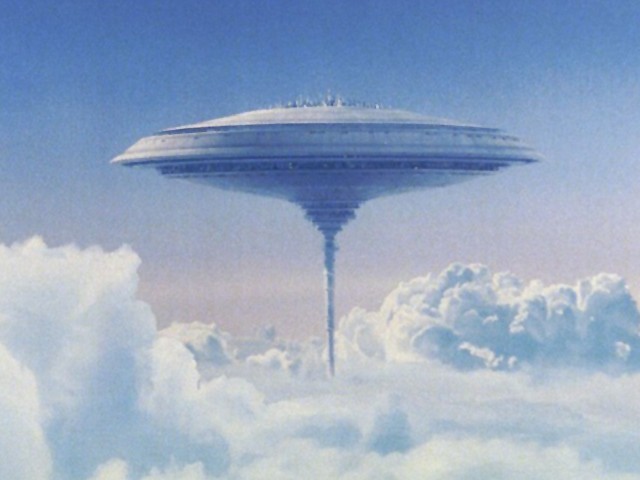What Is The Death Star In The Star Wars Series?
Ever wondered what the Death Star is in the Star Wars series? Well, buckle up and get ready to dive into the epic world of this iconic superweapon. In a galaxy far, far away, the Death Star is a colossal space station known for its sheer power and destructive capabilities. It has captured the imagination of fans worldwide, becoming one of the most recognizable symbols of the Star Wars franchise.
Picture this: a moon-sized battle station, capable of obliterating entire planets with a single blast of its planet-destroying laser. Yes, you heard that right. The Death Star is essentially a planet killer, a weapon of mass destruction on an unimaginable scale. This technological marvel was designed by the Galactic Empire, led by the notorious Darth Vader and Emperor Palpatine, with the sole purpose of exerting their dominance over the galaxy.
But wait, there’s more to the Death Star than just its ability to annihilate planets. It serves as a strategic stronghold, a symbol of fear, and a means to enforce the Empire’s rule. Throughout the Star Wars saga, the Death Star plays a pivotal role, causing havoc and driving the narrative forward. So, let’s dive deeper into the intriguing history and significance of this colossal space station. Get ready for a journey that will take you to the outer reaches of the galaxy and back!
The Death Star is a fictional superweapon in the Star Wars series. It is a massive space station capable of destroying entire planets with its powerful laser beam. Designed by the Galactic Empire, the Death Star is a symbol of their dominance and control. It made its first appearance in the original Star Wars film, A New Hope, and has since become an iconic symbol of the franchise.

What is the Death Star in the Star Wars series?
The Death Star is a fictional space station and superweapon featured in the Star Wars series. It was first introduced in the original 1977 film, Star Wars: Episode IV – A New Hope, and has since become one of the most iconic symbols of the franchise. Designed and created by the Galactic Empire, the Death Star is a massive spherical structure that possesses the power to destroy entire planets with its planet-destroying laser beam.
The Death Star serves as the ultimate symbol of the Empire’s dominance and control over the galaxy. It was built with the intention of instilling fear and subjugation among the Rebel Alliance and other opposition forces. With its vast array of weapons, advanced technology, and imposing size, the Death Star represents the Empire’s commitment to maintaining order through force and intimidation.
The Construction of the Death Star
The construction of the Death Star was a monumental undertaking that required significant resources and manpower. The Empire utilized its vast network of resources and the labor of countless beings to bring the Death Star to life. The station was constructed in secret, hidden within the depths of space and shielded from prying eyes.
The Death Star’s construction was overseen by the Empire’s foremost engineers and architects, led by Grand Moff Wilhuff Tarkin. The project required the mining of vast amounts of resources, including kyber crystals, which powered the Death Star’s superlaser. The Empire also utilized its imperial fleet and droid workforce to assemble the station piece by piece.
Key Features of the Death Star
The Death Star boasts several key features that make it a formidable weapon and a symbol of the Empire’s might. Here are some of its notable characteristics:
1. Superlaser: The Death Star’s primary weapon is its superlaser, a planet-destroying laser beam capable of obliterating entire worlds. The superlaser is powered by kyber crystals, which amplify its destructive power.
2. Shields and Defenses: The Death Star is equipped with powerful energy shields that protect it from enemy attacks. These shields can withstand a significant amount of firepower, making the Death Star an incredibly difficult target to destroy.
3. TIE Fighter Squadrons: The Death Star houses multiple TIE fighter squadrons, which serve as the station’s defense force. These agile and maneuverable starfighters are capable of engaging enemy spacecraft and protecting the Death Star from potential threats.
4. Tractor Beam: The Death Star is equipped with tractor beam technology, allowing it to immobilize and capture enemy ships. This technology enables the Empire to exert control over potential adversaries and prevent their escape.
The Death Star represents the pinnacle of the Empire’s military might and technological advancements. Its sheer size and destructive capabilities make it a symbol of fear and oppression. However, despite its impressive features, the Death Star’s vulnerability and ultimate fate are explored in the Star Wars saga, making it a pivotal element of the story.
Legacy of the Death Star
The Death Star’s legacy extends far beyond its physical presence in the Star Wars series. The destruction of the Death Star by the Rebel Alliance in A New Hope serves as a turning point in the fight against the Empire and inspires hope among the galaxy’s oppressed. The Death Star’s destruction symbolizes the triumph of good over evil and the power of unity and resistance.
The Death Star also serves as a cautionary tale about the dangers of unchecked power and the consequences of technological advancement used for destructive purposes. Its existence highlights the need for balance and ethical considerations in the pursuit of scientific progress.
The concept of the Death Star has become ingrained in popular culture, with references and parodies appearing in various forms of media. Its iconic design and role in the Star Wars narrative have solidified its place as one of the most recognizable symbols in science fiction.
In conclusion, the Death Star is a fictional space station and superweapon in the Star Wars series. It represents the Empire’s dominance and control, constructed with immense resources and overseen by top engineers. Key features include the superlaser, shields and defenses, TIE fighter squadrons, and tractor beam technology. The Death Star’s legacy extends beyond its physical presence, serving as a symbol of hope, a cautionary tale, and an iconic element of popular culture.
Key Takeaways: What is the Death Star in the Star Wars series?
- The Death Star is a gigantic space station and superweapon featured in the Star Wars series.
- It was built by the Galactic Empire with the intention of exerting control and destroying rebel forces.
- The Death Star is known for its immense size and destructive power, capable of obliterating entire planets.
- It first appeared in the original Star Wars film, “A New Hope,” and later made appearances in other movies and TV shows.
- The Death Star became a symbol of the Empire’s tyranny and was eventually destroyed by the Rebel Alliance.
Frequently Asked Questions
Question 1: How was the Death Star constructed?
The Death Star, a massive space station, was constructed by the Galactic Empire in the Star Wars series. It was built in secret and took years to complete. The station was created using the resources and labor force of the Empire, making use of advanced technology and engineering. Its construction involved the assembly of numerous components, including the installation of powerful weapons, shielding systems, and the iconic superlaser.
The Death Star’s construction was a monumental task, requiring the coordination of thousands of workers and the transportation of massive amounts of material across the galaxy. The station’s design and construction were closely guarded secrets, with only a select few individuals having knowledge of its existence and purpose.
Question 2: What was the purpose of the Death Star?
The Death Star was designed as a superweapon by the Galactic Empire. Its primary purpose was to project the Empire’s military might and instill fear in its enemies. The station was equipped with a planet-destroying superlaser, capable of obliterating entire worlds with a single shot. This immense destructive power was intended to deter any opposition to the Empire and establish its dominance across the galaxy.
In addition to its offensive capabilities, the Death Star also served as a mobile base for the Empire’s forces. It could house thousands of troops, starfighters, and support personnel, allowing for swift deployment and operations in various locations. The station also served as a symbol of the Empire’s power and control, further solidifying its authority over the galaxy.
Question 3: How did the Death Star get destroyed?
The Death Star met its ultimate demise in the Star Wars series. In the original film, “Star Wars: Episode IV – A New Hope,” a group of Rebel Alliance fighters led by Luke Skywalker launched an attack on the Death Star. They exploited a weakness in the station’s design, a small thermal exhaust port, and successfully fired proton torpedoes into it, causing a chain reaction that resulted in the station’s destruction.
The Rebellion’s victory was a significant turning point in the Galactic Civil War, as it showcased the vulnerability of the Empire’s seemingly invincible weapon. Subsequent films in the series also feature the destruction of subsequent Death Stars, each time through strategic planning and courageous acts of heroism by the Rebel Alliance and its allies.
Question 4: How many Death Stars were there?
In the Star Wars series, there were a total of three Death Stars. The first Death Star, as mentioned earlier, was destroyed in “Star Wars: Episode IV – A New Hope.” The second Death Star appeared in “Star Wars: Episode VI – Return of the Jedi” and was also destroyed by the Rebel Alliance.
The third Death Star, known as the Starkiller Base, appeared in “Star Wars: Episode VII – The Force Awakens.” Although it had a different name, the Starkiller Base essentially functioned as a more advanced version of the Death Star, capable of destroying entire star systems. It, too, met its demise in the film, thanks to the efforts of the Resistance.
Question 5: What impact did the Death Star have on the Star Wars universe?
The Death Star had a profound impact on the Star Wars universe. Its destructive power and the fear it instilled in those who opposed the Empire played a significant role in shaping the Galactic Civil War. The station became a symbol of the Empire’s dominance and the Rebellion’s fight for freedom.
The destruction of the Death Stars became iconic moments in the series, representing triumph over seemingly insurmountable odds. These events inspired hope and rallied individuals to join the Rebel Alliance, ultimately leading to the downfall of the Empire. The legacy of the Death Star serves as a reminder of the power of unity and the resilience of those fighting for justice and freedom.
The Real Reason Why the Death Star Was Created
Final Thought: Exploring the Enigma of the Death Star in the Star Wars Series
And there you have it, the Death Star, a legendary weapon of immense power and destruction in the Star Wars series. This colossal space station has captured the imagination of fans around the world, leaving them in awe of its sheer magnitude and the fear it instills in the hearts of rebels and enemies of the Empire. But what exactly is the Death Star?
In essence, the Death Star is a technological marvel, a moon-sized battle station armed with planet-destroying capabilities. It serves as the ultimate symbol of the Empire’s might and dominance over the galaxy. With its superlaser and formidable defenses, this behemoth strikes fear into the hearts of all who oppose it.
However, the Death Star is more than just a weapon. It represents the dark side’s insatiable thirst for power and control. It embodies the Empire’s relentless pursuit of order and its willingness to obliterate anything that stands in its way. From its iconic appearance to its pivotal role in the Star Wars saga, the Death Star has become an iconic symbol of evil and tyranny.
As we delve deeper into the Star Wars universe, we uncover the intricate details and hidden stories surrounding this enigmatic creation. From its construction to its eventual destruction, the Death Star has left an indelible mark on the hearts and minds of fans. So, whether you’re a die-hard Star Wars enthusiast or a casual viewer, the Death Star will continue to fascinate and captivate audiences for generations to come. May the force be with you!






